My favourite…
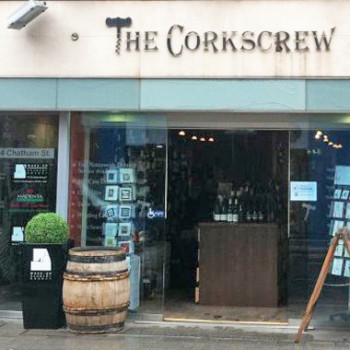
In NOffLA's monthly column featuring the favourite products of NOffLA staff members across the country, this month, we have three contributors from wine shops, which have recently joined the National Off-Licence Association as part of the broadening membership
16 January 2015
Paul Foley, The Corkscrew, Chatham Street, Dublin 2:
I have been involved in some capacity within the wine trade for a little over 20 years now. It is a more difficult task than I had envisaged to pick just one wine as a “favourite” out of so many. For as often as a wine has the ability to change and adapt within the bottle, so does my own personal tastes. I started writing about Champagne, then I changed to Burgundy – made from the often petulant Pinot Noir & Chardonnay grapes but when they get it right, boy, they get it right… However, given the time of the year I decided to settle on a wine from Domaine Seguela based in the town of Rasiguères, near Perpignan in the South of France – a baby Chateauneuf du Pape.
Wine maker Jean-Pierre Seguela cultivates around 20 hectares or vineyards, with vines between 25 and 90 years old, using biodynamic methods on crumbling schist soils to encourage deep rooting and low yields. Deep crimson in colour with a sumptuous nose that offers fresh berry fruits as well as dried fruits, chocolate and earthy aromas. On the palate the wine is rich and seductive, with flavours of Morello cherry, prune, black pepper and some vanilla sweetness coming from the oak. The tannins are balanced and firm and give the wine extra body.
This is the great entry point to the Seguela Domaine and was one of the very first wines I imported all those years ago! Made of 60% Grenache, 20% Syrah and 20% Carignane, it is a great Southern French blend that meets the reputation of Chateauneuf in its ingredients and then adds Roussillon’s own footprint. This is great value and a very smart wine with a recommended retail price of €22.95!
Gabriel Cooney, On the Grapevine, St Patrick’s Road, Dalkey, Co. Dublin:
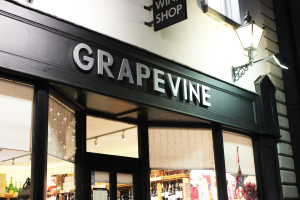 When we started importing Italian wine about 14 years ago, we were at Vinitaly and noticed a huge crowd around a stand in the Tuscany pavilion. Intrigued by what could be causing such a fuss, we wormed our way in and were welcomed in to taste a stunning range of wines – we were hooked on Poliziano…..
When we started importing Italian wine about 14 years ago, we were at Vinitaly and noticed a huge crowd around a stand in the Tuscany pavilion. Intrigued by what could be causing such a fuss, we wormed our way in and were welcomed in to taste a stunning range of wines – we were hooked on Poliziano…..
Recognised as one of the leading lights in the famous DOC of Vino Nobile di Montepulciano, Poliziano and its owner Federico Carletti are hugely respected in the Italian wine scene. They are specialists in their beloved grape variety Sangiovese and this forms the backbone of their range. Their most famous wine and almost annual recipient of “tre bicchiere” in the Gambero Rosso is a wine called “Asinone” – a single vineyard Vino Nobile that is simply stunning and offers pretty good value compared to some of its Tuscan rivals. Their “regular” Vino Nobile is also rightly lauded as being a prime example of what the region has to offer, but the wine I really like is their entry-level wine – Rosso di Montepulciano.
Their Rosso is the bread and butter of their business and is the one wine they make sure to get right every year. In a weak vintage, Asinone is sacrificed to make sure there is enough good fruit for the Vino Nobile and Rosso (don’t expect any 2014 Asinone!). The Rosso is 80% Sangiovese and 20% Merlot and gets a year in American oak. The result is a soft and approachable wine with great fruit and enough structure to remind you that you are drinking a serious wine. Good enough to impress on a special occasion and approachable enough for a midweek pizza, it is the go-to wine in our house. If we don’t know what to drink with dinner, a bottle of Poliziano Rosso always hits the spot!
Gerard Maguire, 64 Wine, Glasthule Road, Sandycove, Co. Dublin
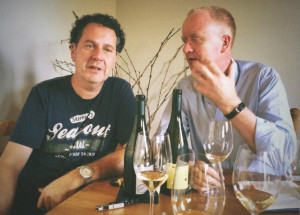 My father was a military man and each Sunday at 1pm we sat around the dining room table in silence as he carved the roast while listening to the RTÉ news on the radio. Beef, lamb, chicken, whatever, was always washed down by a bottle of Romanian or Chilean red which he had earlier carefully decanted. It was difficult then to get excited about wine, but poor as it was, it still managed to convey the message of occasion.
My father was a military man and each Sunday at 1pm we sat around the dining room table in silence as he carved the roast while listening to the RTÉ news on the radio. Beef, lamb, chicken, whatever, was always washed down by a bottle of Romanian or Chilean red which he had earlier carefully decanted. It was difficult then to get excited about wine, but poor as it was, it still managed to convey the message of occasion.
Nearly 40 years on, the Sunday roast still has pride of place in our family routine. The wine thankfully has improved, but its role of conveying that occasion remains.
Now however, I expect more than just a beverage to wash down the beef. I expect the wine to tell a story, either actual or imagined. To bring me back to the moment when the winemaker showed me the gnarly old vine or when I stood frozen in his cellar as he scooped out a barrel sample to share. I want to imagine standing on the slate slopes at harvest as I savour a Riesling from the Rheingau, or scrambling up l’Ermita on my hands and knees as I drink an aged and slightly musty Priorat.
I’m not sure if it is the power of great wine or just a vivid imagination that allows such journeys to unfold.
‘My favourite’ wine has to tell a story or bring me on a journey. It can’t be just another great Bordeaux that Parker lauds, or a delicate and refined old Burgundy, or a powerhouse Cote Rotie with its evocative truffle aromas.
‘My Favourite’ has to be a wine where I feel I share ownership, that I have discovered it like an ancient treasure. It has to be a discovery to share with friends. My job allows many of these indulgences but few are more vivid in my mind than drinking a glass of Vinya dels Taus Nun from Penedes in Spain.
Earlier this year I tasted this unique wine made from 100% Xarel-lo in a small seafood restaurant on the rugged Catalonian coast. I was so intrigued with the exotic fruit character and intensity of the wine that I made contact with the winemaker. Two months ago I travelled to meet him at his tiny estate an hour from Barcelona. Enric Soler, the former sommelier at El Buli inherited 2.5 acres of abandoned 60-100 year old vines from his grandfather.
The vines are inauspiciously located with the motorway separating them from Enric’s tiny winery.
He is one of only a tiny handful of winemakers making a still wine from this grape which is produced in vast quantities for the Cava industry. In fact Jancis Robinson, in a rather too general observation, has virtually written it off as ‘Catalonia’s most characterful grape which can smell of rubber and boiled cabbage’.
Now when I open a bottle, inhale those exotic fruit scents and swallow the delicious Burgundian like wine, I am drawn back to that rocky beach in Catalonia and each time I share a glass I share that journey…
Incidentally, each vintage is now on the wine-list in El Celler do Can Rocca in Girona.



 Print
Print
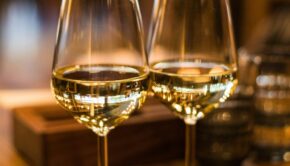
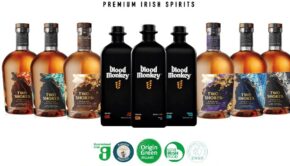




Fans 0
Followers